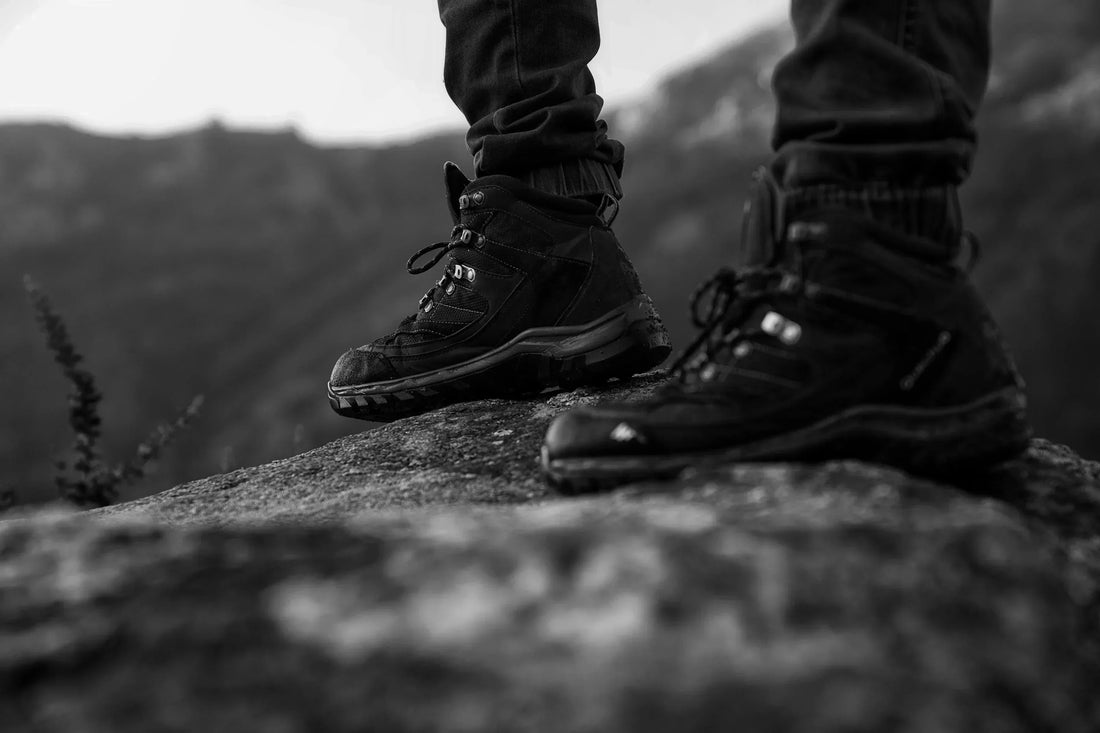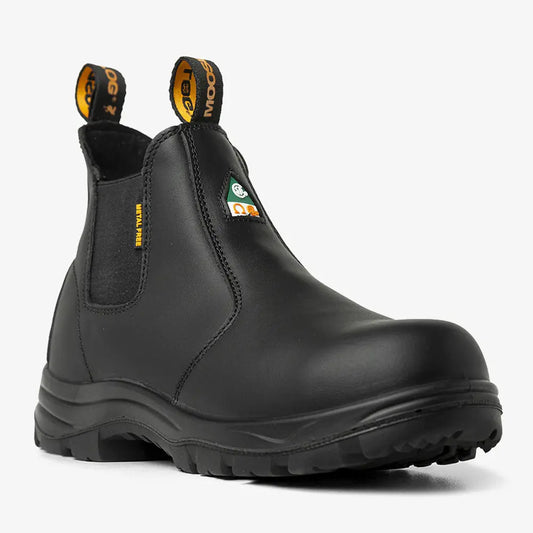When it comes to long days on your feet, choosing the right footwear makes all the difference. Many people working in warehouses, landscaping, or light construction ask the same question: Can I just wear hiking boots to work? The answer depends on the demands of your job. Understanding the difference between work boots and hiking boots could save you from injury, fatigue, or costly replacements.
In this guide, we’ll break down the key differences in materials, safety features, construction, and comfort. If you’re deciding between work boots vs hiking boots, keep reading. Your feet will thank you.
1. Toe Protection: Safety vs. Comfort
One of the biggest differences between hiking boots and work boots is in the toe cap.
Most work boots are built with safety toes, either steel, alloy, or composite. These are designed to protect your feet from impact or compression injuries which is key for job sites with heavy materials or machinery. Look for boots certified under ASTM F2413 or CSA Z195 to ensure real protection.
On the other hand, hiking boots typically have soft toes. They’re made for comfort and mobility, not jobsite hazards. If your workplace has falling object risks, sharp tools, or toe injury potential, hiking boots won’t cut it.
2. Outsole Design: Grip and Traction Differences
The outsole of your boots is what keeps you stable on your feet. Work environments demand different types of traction than hiking trails.
Work boots are built with slip-, oil-, and heat-resistant soles. Some use wedge outsoles for flat stability, while others feature lug patterns or 90-degree heels for climbing ladders and uneven terrain. Products like the MooseLog 5666 Safety Boot often use certified rubber compounds like SafeTread™ for jobsite performance.
In contrast, hiking boots are optimized for rocky, muddy, or root-covered trails. Their grip focuses on flexibility and grip in natural environments, not on concrete floors slick with oil or sawdust.

3. Midsole and Plate Construction
Work boots often include puncture-resistant plates, especially when certified by ASTM or CSA standards. These plates, usually made from steel or advanced composites like Dyna-Flex®, are placed between the outsole and insole to protect your feet from nails or debris.
Hiking boots don’t include puncture-resistant features. If you’re working in construction, landscaping, or industrial settings, this lack of protection becomes a real liability.
4. Support and Comfort: All-Day Wear
Here’s where the line gets blurry. Many people find hiking boots more comfortable out of the box. They’re lighter, more flexible, and often have softer midsoles built for mileage rather than impact resistance.
But modern work boots have come a long way. Brands like MooseLog include dual insole systems for personalized fit, along with breathable linings and reduced weight designs. If you choose a lightweight composite toe boot with comfort tech, it can be just as easy to wear all day, but with added protection.
Tip: Look for boots with a removable spacer insole, so you can fine-tune fit and support depending on foot shape or orthotic needs.
5. Durability and Jobsite Conditions
Work boots are engineered to take abuse. Whether it's from concrete dust, rebar, or pallet jacks, they're reinforced at every level from abrasion-resistant uppers to stitched-on soles.
Hiking boots aren’t designed for these environments. While they hold up well to natural elements, the constant exposure to oil, chemicals, or steel-toed impact zones will wear them out fast.
If you’re working full-time in a blue-collar job, expect to go through multiple pairs of hiking boots where one pair of certified safety boots could last.
6. Certification: Why It Matters
Here's a major difference: Work boots are legally required in many professions. Provinces across Canada and safety standards in the U.S. both require CSA or ASTM compliant footwear in roles ranging from construction to warehousing.

Hiking boots carry no such certification. Wearing uncertified boots in a role that demands them can leave you vulnerable to injury and employers may face liability if you're not properly equipped.
If you're not sure what symbols apply to your job, check with your health and safety board or consult official guides from the CSA Group or ASTM International.
Want to learn more about the difference between CSA and ASTM? Here's a quick guide.
So... Can You Wear Hiking Boots to Work?
If your job is casual, light-duty, and doesn’t involve risk of falling objects or punctures, you might get away with hiking boots. But the moment you step onto a real jobsite, or work in a regulated industry, you need certified safety boots.
Warehouse workers, tradespeople, landscapers, and municipal staff all face risks that hiking boots just aren’t made for. At the end of the day, it’s about protecting your body and your job. It's always smart to invest in your own feet.
Where MooseLog Comes In
At MooseLog, we design ASTM and CSA dual certified boots for real workers. All our models feature modern safety technology, a lightweight build, and all-day comfort.
If you’ve been wearing hiking boots to your shift, it’s time to level up. Explore our collection of certified safety boots for the jobsite.





